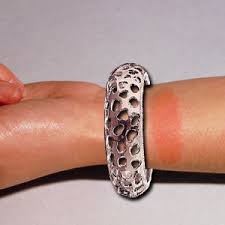News & Articles

NICKEL RESTRICTIONS IN GIFTWARE

ECHA call for comments on draft Guidance on “articles in prolonged skin contact” – Nickel restriction (REACH) – Draft guidance list of articles in the scope of the restriction
We would like to draw your attention to the recent call for comments (Link) launched by ECHA on the proposed draft Guidelines “on articles intended to come into direct and prolonged contact with the skin” in relation to the existing restriction on nickel under REACH (Entry 27, Annex XVII to REACH). The deadline for the submission of comments is 19 April.
We are informing you on this topic as we believe that this ECHA draft Guidance and the list of articles covered could be relevant to your sector or value chain. The issue is important as it can have potential access to the market implications for the articles covered in the list.
Background:
The nickel restriction has been in place under EU legislation for many years. It was first established by Directive 94/27/EC (so called Nickel or Jewellery Directive) and subsequently incorporated into REACH (Annex XVII, Entry 27). The aim was to reduce consumer dermal exposure to nickel to prevent nickel sensitisation (nickel allergy) and nickel allergic reactions (contact dermatitis). To this purpose, the current Regulation states that Nickel and Nickel compounds shall not be used:
(a) in body piercing unless the Ni release […] is less than 0,2 ?g/cm2/week
(b) in articles intended to come into direct and prolonged contact with the skin such as:
earrings, necklaces, bracelets and chains, anklets, finger rings, wrist-watch cases, watch straps and tighteners, rivet buttons, tighteners, rivets, zippers and metal marks, when these are used in garments, if the Nickel release rate from the parts of these articles coming into direct and prolonged contact with the skin is greater than 0,5 ?g/cm2/week.
Articles cannot be placed on the EU market (produced within EU or imported) unless they comply with this requirement.
The interpretation of “prolonged skin contact”:
The text of the Regulation does not provide a definition of “prolonged contact with the skin”. Over the years the issue of its interpretation was raised by some Member States Competent Authorities and stakeholders. In 2014, REACH Competent Authorities (CARACAL) endorsed a first guidance interpretation by ECHA of the concept of “prolonged contact with the skin”, as follows:
Prolonged contact with the skin is interpreted as contact with the skin of potentially more than either
- 10 minutes on three or more occasions within two weeks, or
- 30 minutes on one or more occasions within two weeks.
The skin contact time of 10 minutes applies when there are three or more occasions of skin contacts within a two-week time period. The skin contact time of 30 minutes applies when there is at least one occasion within a two-week time period.
What is the issue and why it could be relevant for you? – New Draft ECHA Guidance: list of articles within the scope of the restriction
However, Member States wanted more concrete and practical guidance to facilitate enforcement. Therefore in 2014 the European Commission mandated ECHA to provide further guidance on the application of the restriction and the interpretation of “prolonged skin contact”, including by developing a non-exhaustive list of articles to be considered as falling in the scope of the restriction as well as a list of articles to be considered as falling outside of the scope. These lists of articles have now been drafted and are available for public consultation on the ECHA website. Items of concern to you may be on these lists.
What are the possible implications?
The draft ECHA list includes a wide range of several types of articles, far beyond those items which are currently explicitly listed in the existing Regulation (i.e. the articles mentioned above). The matter is important as the Guidance list can change the interpretation and de facto the scope of the restriction, with possible market access implications for those articles considered as falling in the scope and not meeting the nickel release limits.
What you can do?
We advise you to look at the draft ECHA Guidance and, in particular, review carefully the list of “examples of articles or parts of articles” within the scope of the restriction (Annex 1: Tables 1, 2, 3). Some of the articles listed can be relevant for your sectors / companies and value chains. If so, you may want to alert them and raise awareness about the issue.
Preliminary assessment of the Nickel Institute
The Nickel Institute and its scientific department (NiPERA) are currently reviewing the draft ECHA Guidelines. Our preliminary assessment is that the inclusion of a number of articles appears surprising and possibly going beyond the scope of the restriction as originally intended (i.e. covering articles intended to come into direct and prolonged skin contact such as jewellery items). The draft list seems to go even beyond the first guidance interpretation endorsed by CARACAL in 2014 (see above), which the Nickel Institute did not agree with, as it was based on available information, not sufficient to accurately determine the definition of “prolonged contact”.
While we fully support the aim of the restriction (i.e. preventing nickel allergy), it is important that the ECHA lists of articles be based on robust scientific evidence, as well as be proportionate and justified. The guidance list of relevant articles should not affect articles unnecessarily that are not demonstrated or likely causes of nickel allergy. Our position is that rather than changing its interpretation, what remains crucial to prevent nickel allergy, is ensuring compliance with the existing nickel restriction.
Next steps for the Nickel Institute
We are available to provide assistance and information to the affected sectors. We intend to organise an online webinar in March (date TBD) on this topic, to provide background information about nickel allergic contact dermatitis and present the position of the Nickel Institute in view of the public consultation.
Please let us know if you would be interested in joining the webinar and in keeping in touch on this matter and we will add you to our distribution list. In the meantime, you can find useful background information about nickel and allergic contact dermatitis on the dedicated section of our website (Link).

